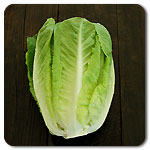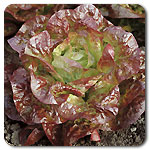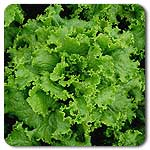 Note: This is the first post from RCR Committee member Faeterri Silver. Faeterri has been a teacher and in practice in whole health fields for over 30 years. Her passions are the organic growing of vegetables and herbs, the identification of wild foods and medicines, and the preservation of those products. She lives in the community of Cape Ray on the southwest coast when in NL and looks forward to sharing her knowledge as she also continues to learn and grow.
Note: This is the first post from RCR Committee member Faeterri Silver. Faeterri has been a teacher and in practice in whole health fields for over 30 years. Her passions are the organic growing of vegetables and herbs, the identification of wild foods and medicines, and the preservation of those products. She lives in the community of Cape Ray on the southwest coast when in NL and looks forward to sharing her knowledge as she also continues to learn and grow.
We often buy lettuce as full heads, yet when growing lettuce we can harvest it a few different ways by removing the whole head, taking just the outer leaves, cutting the head down to an inch off the ground and watching it regrow another head, or growing lettuce as baby leaf micro-greens for harvest all summer long. Baby leaf harvests are ready in as little as 21 days. I sow succession plantings of lettuce about every three weeks outside in the gardens during warm months, inside in pots throughout the winter, and eat homegrown lettuce all year long.
Lettuce is low in calories and has a high amount of water. It is a good source of chlorophyll and Vitamin K. The leafier the lettuce the more nutrient dense it is. Nutrients in lettuces include Vitamins A, B1, B2, C, folic acid, choline, and minerals manganese, iron and chromium. Lettuce also contains lactucarium, a compound that relaxes the nerves.
It is usually eaten raw as a salad green but an excess can be made into lettuce soup. I like using lettuce as a wrap instead of using a bread product. Texture varies from the familiar iceberg lettuce that holds a salad dressing well to the tender bibb and butterhead varieties. My personal favourites are the leaf lettuces, both red and green. Romaine lettuces are crisp, solid and leafy and are the lettuce of the Caesar salad. Delicate oakleafs make great baby leaf harvests. Storage in the refrigerator will last about a week for the crispier lettuces. One should not wash the leaves until ready to eat. Try experimenting with some new lettuce recipes this summer.
When growing, lettuce has a tendency to become bitter in the heat or to bolt as the days lengthen and it goes to seed. Agriculturalists have specifically bred varieties of lettuce that do not get bitter in the summer heat, are more suited to low light conditions, are heat and/or frost tolerant, or withstand drought or wet conditions. So look for those special characteristics when choosing what lettuce is right for you to grow. A few varieties are even good for winter temperatures.
Lettuce, a member of the sunflower family (Composite family), is an inbreeding, self-pollinating crop. That means one only needs about 20 plants of the same variety to save seed and generally it does not cross pollinate with other varieties planted nearby.
When the lettuce bolts, flowers form in heads of about twenty individual yellow florets that each, once pollinated, contains one seed. This process happens in one day: the opening of the flower, the pollination, and the closing of the floret. Varieties that have a dense head can be encouraged to send up a seed stalk by cutting an X halfway through the head or by peeling away the lettuce leaves until the stalk is exposed. Go ahead and eat them if they are not bitter.
Seeds ripen irregularly and are ready to collect 2-3 weeks after flowering. Harvest every few days by shaking the seed into a paper bag or cut the entire head when 50% of the seed has ripened and dry the head in a grocery bag. When dry shake the head into the bag or rub the seed into the bag. Clean the seed from the chaff using a fine mesh screen. Gently shake the screen and gently blow the seed so that the feathers fly away. Seed will remain viable for 3 years if stored in a cool, dry and dark location. You may find these demonstrations useful for saving buttercrunch lettuce and oak leaf lettuce.




